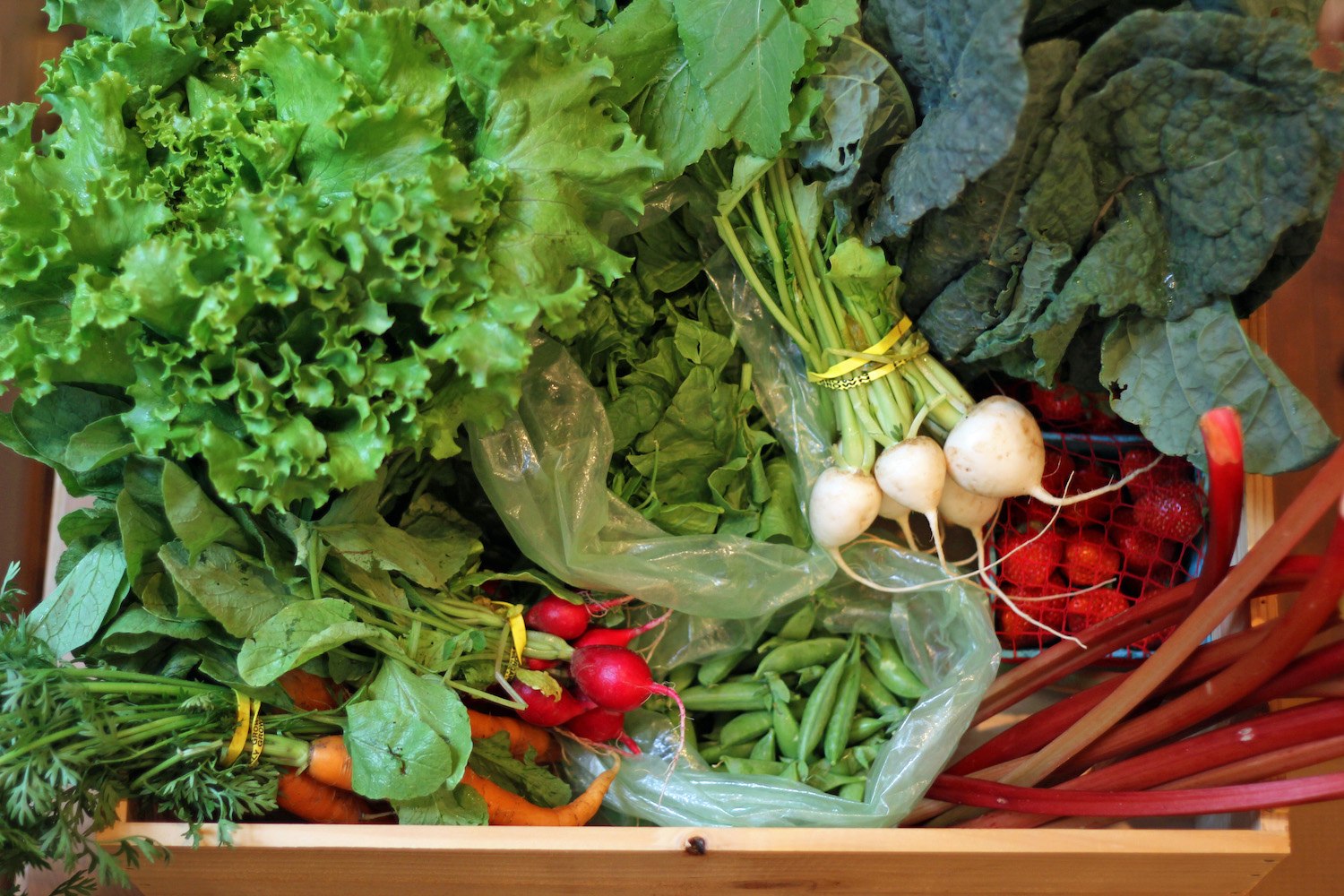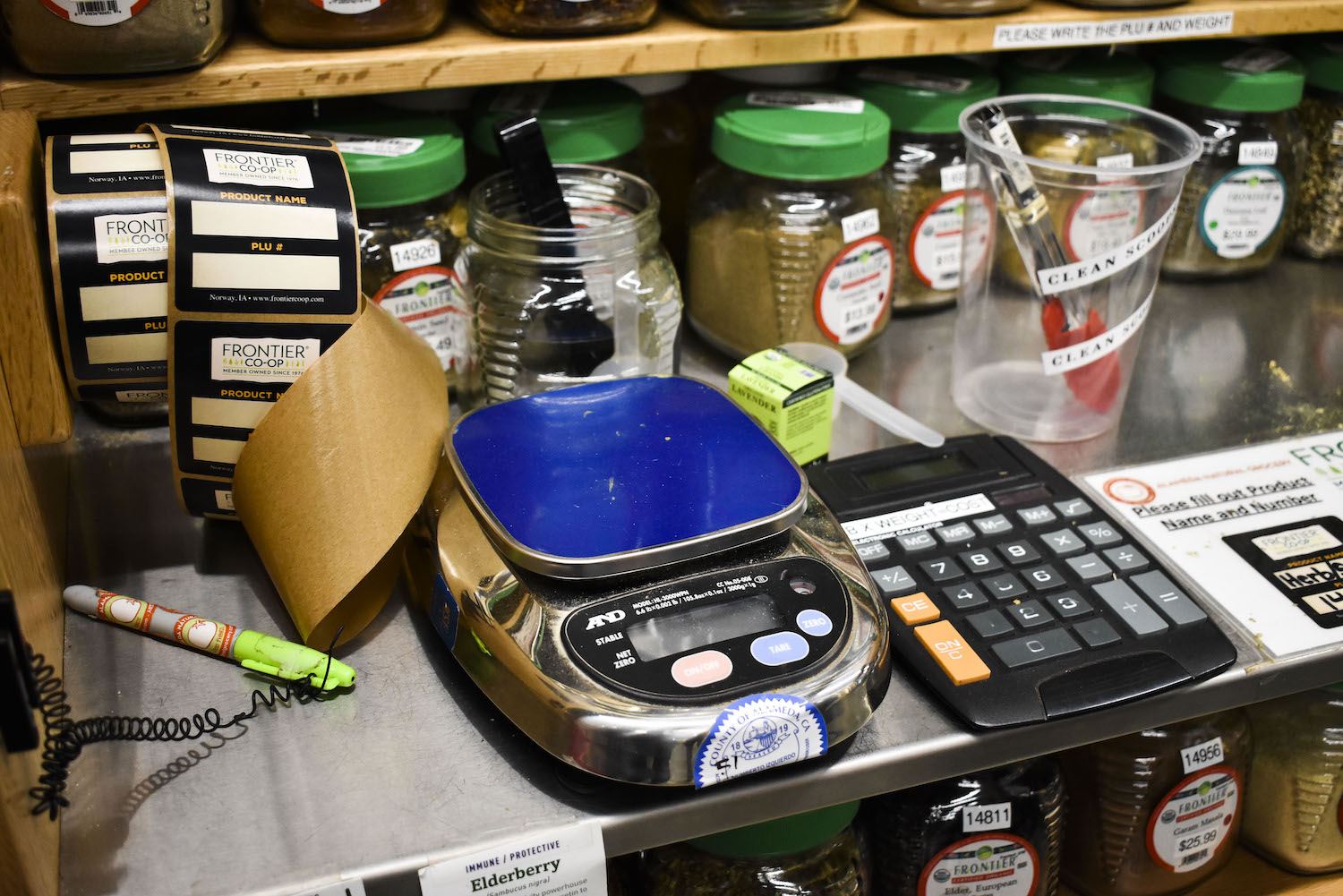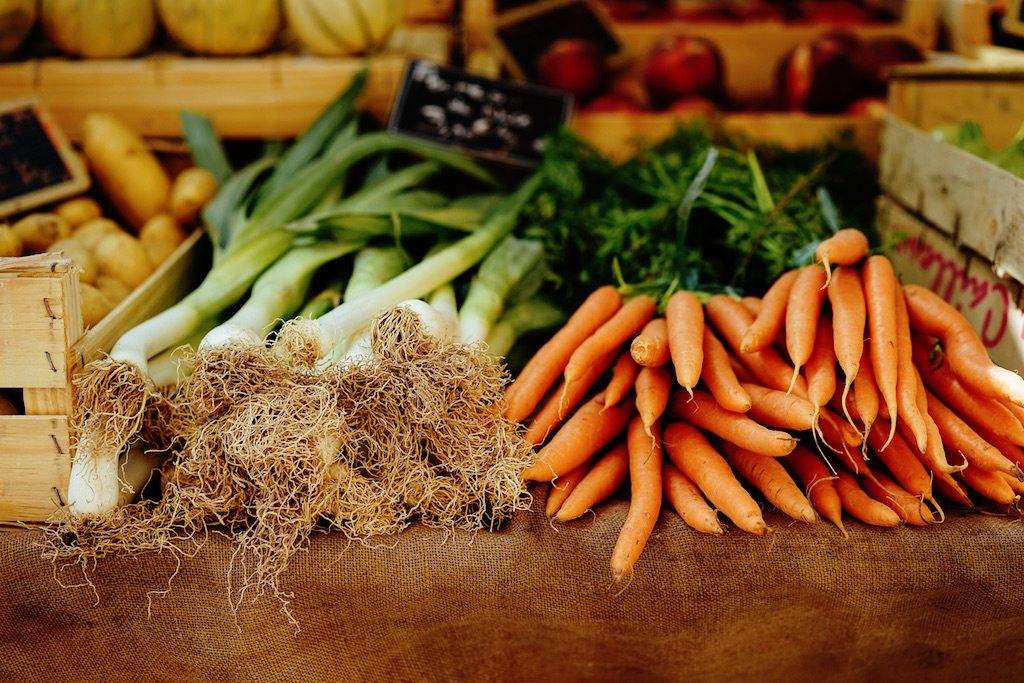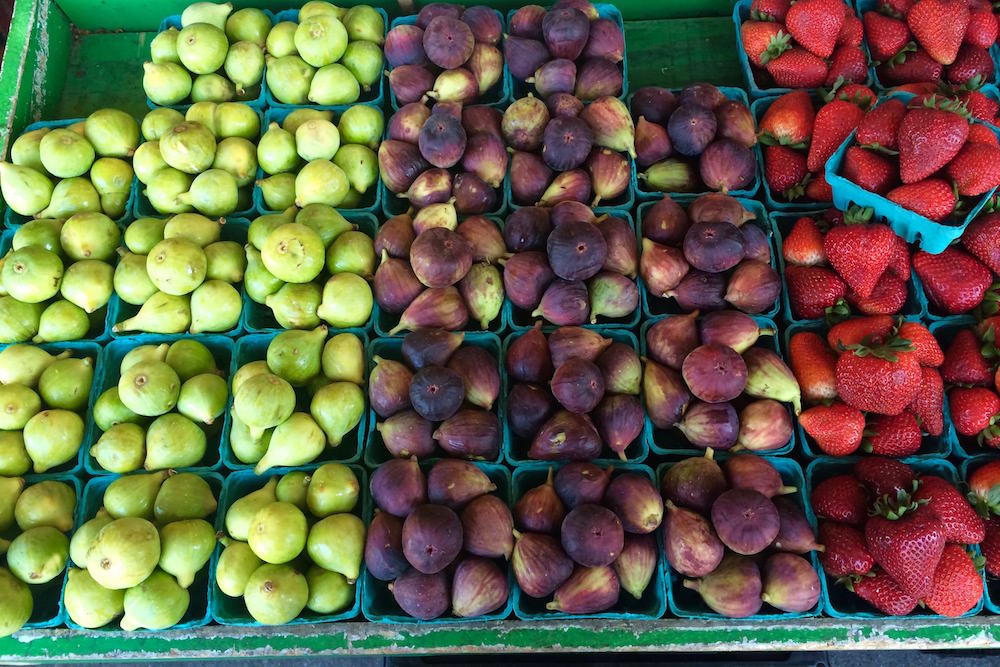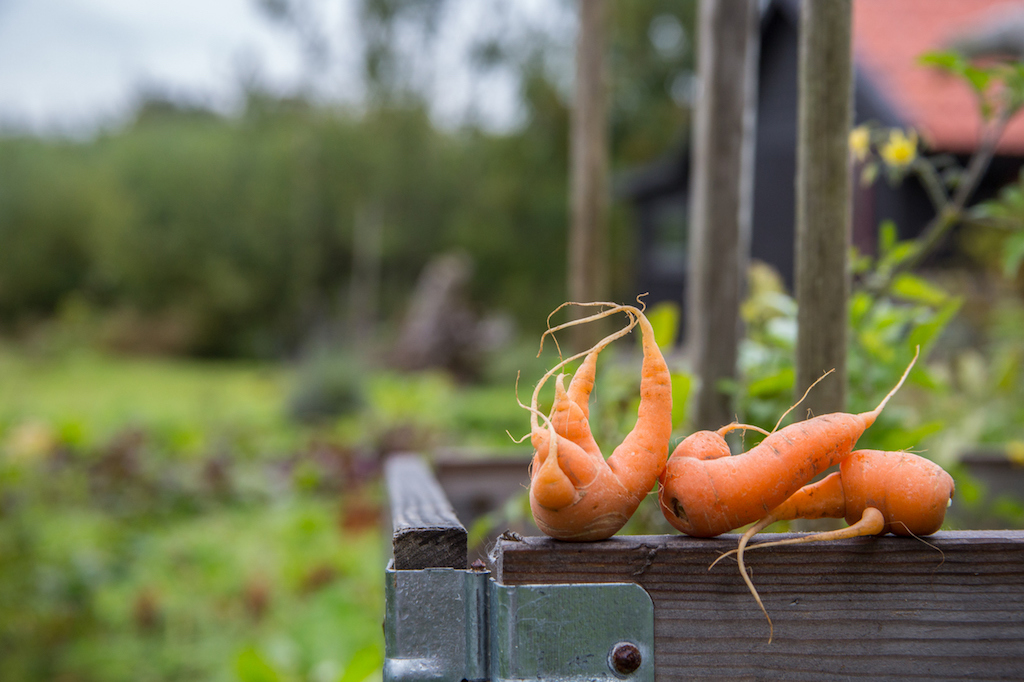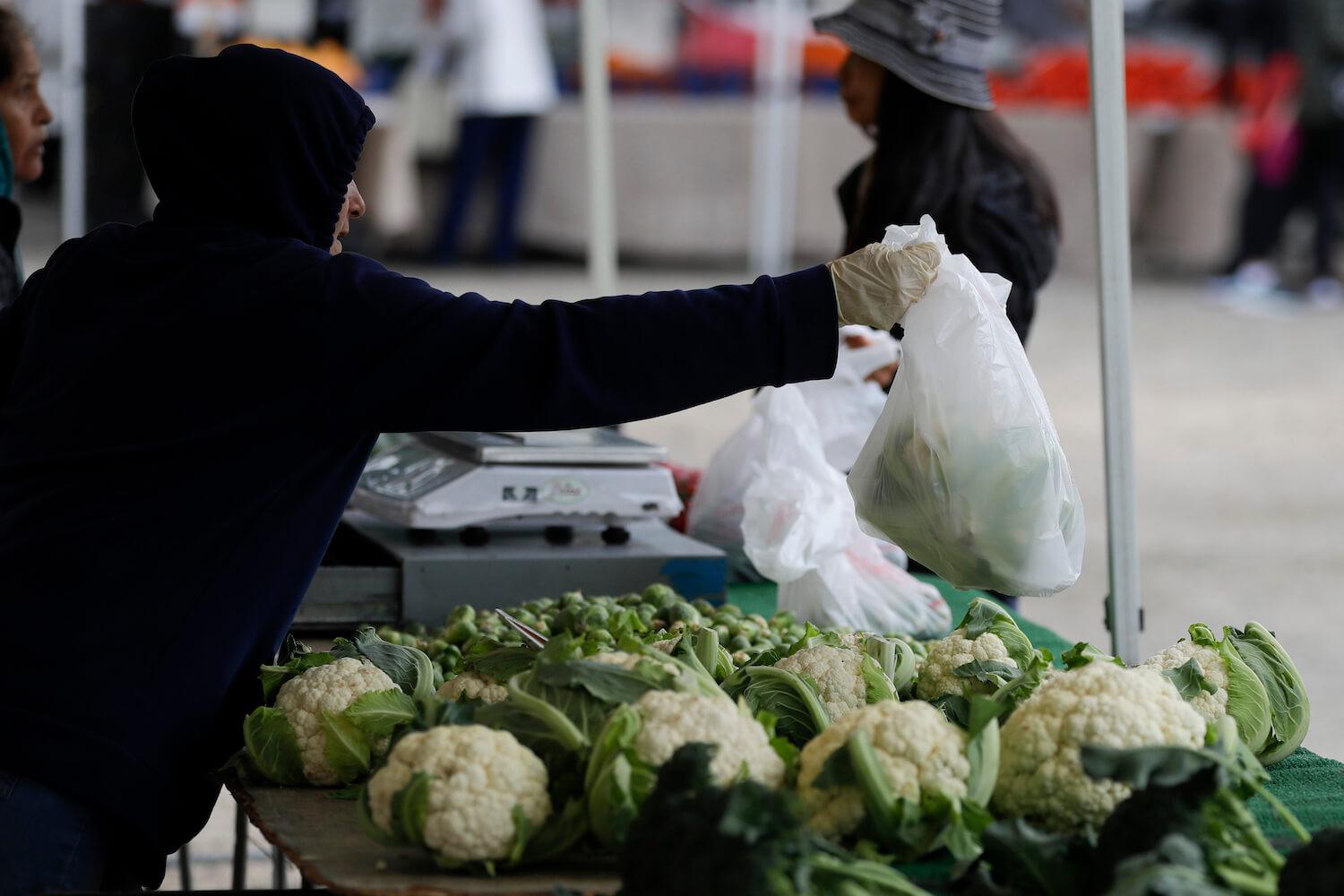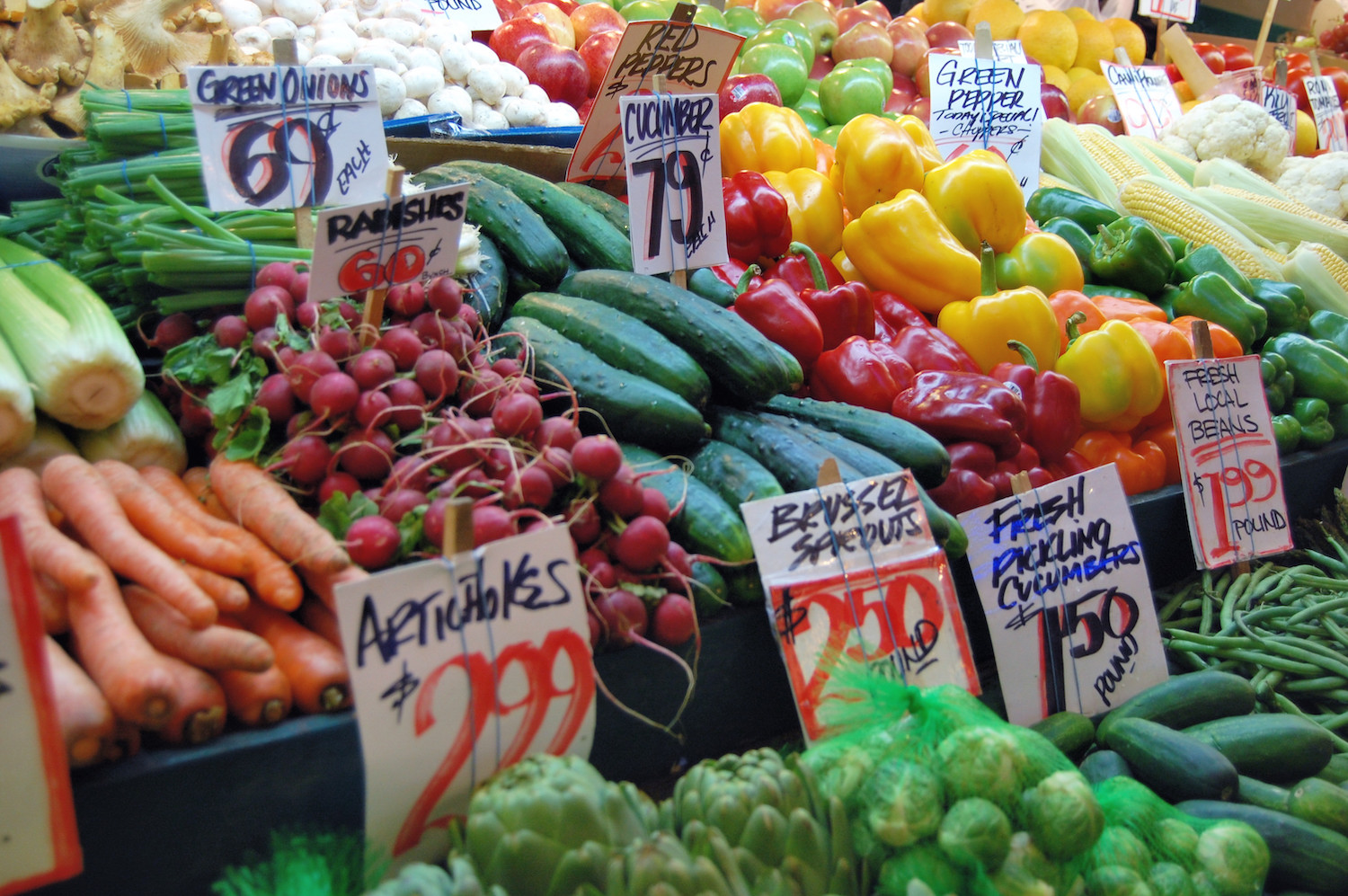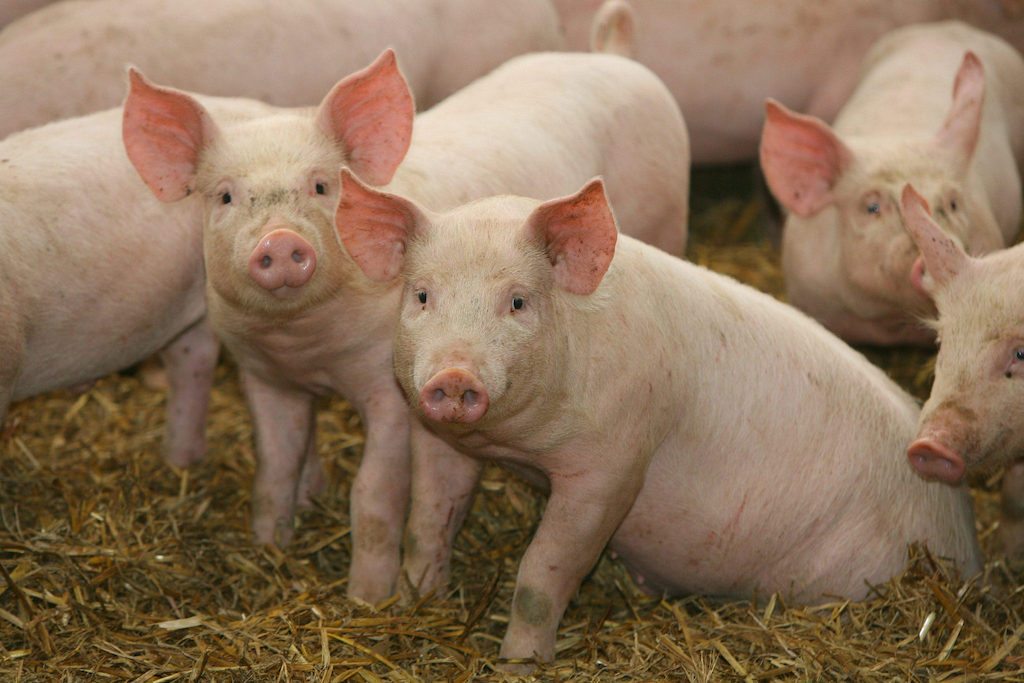Faced with an unparalleled number of options for purchasing local produce, CSA memberships have been declining for years.
There have never been more ways to get fresh produce sent to your home, from basic grocery delivery services; to “misfit” and “ugly” veggie startups; to bespoke, plant-based meal kits. But at the end of the day, what’s in a veggie box? Is it merely a collection of assorted produce, or is it a value system? Do you spend those dollars simply to fill your fridge, or are you also trying to support small farmers and local agriculture? Does it matter if the items are USDA-certified organic, or if some items are grown several states away?
As veggie box delivery companies have proliferated, some small-scale farmers say it has become harder to run traditional community supported agriculture (CSA) operations, in which consumers buy a “share” of a local farm’s harvest at the beginning of the growing season. In return for this investment, share owners get a box of whatever produce was harvested. There’s an inherent gamble, in that the consumer shares the risks associated with farming. If it’s a bad year for tomatoes, they may not get any tomatoes.
By contrast, produce delivery from start-ups like Misfits Market and regional companies like Local Roots offer a range of other conveniences, like home delivery, one-time add-ons (eg, bread or meat and dairy products), subscription pricing, and the option to pause your subscription at any time—if you have to go out of town, for example, or if you simply didn’t finish last week’s veggies. There’s also less risk, because these companies are typically buying from multiple farmers, so you’re going to get your veggies no matter what.
Ad hoc produce delivery companies don’t create community, and they don’t provide direct support to farmers.
But going through a third party means buyers aren’t directly supporting farmers. And that of course means farmers just aren’t making as much money in these scenarios as they would in traditional CSAs. They also don’t get an infusion of cash at the beginning of the season, when they need it most to buy seed and other supplies. Not to mention, farmers bear all the risk themselves—if they don’t have veggies to sell the veggie box companies, they don’t get anything at all.
In response to a rapidly changing market, some farmers have scaled back or altered their models to compete with the offerings from Silicon Valley-type start-ups; others have stopped running CSAs altogether.
“We had over 500 members at our height,” says April Yuds, who runs LotFotL (“living off the fat of the land”) Community Farm in Elkhorn, Wisconsin, with her partner, Tim Huth. “Our farm was growing significantly each year, so we were projecting growth. And the [negative] shift in the market happened very swiftly … we had to sell equipment, we had to cut our staff back and take on debt … all while, every year for the last five years, our CSA income decreased.”
Yuds says that other farmers in their area decided not to do CSAs anymore, or had to close their farms down entirely.
“There were lots of nights where I wondered if we would make it to another year or if we were gonna need to make more aggressive change, like one of us taking on a different type of full-time work,” Yuds says. “We both now have part-time jobs.”
Community-supported agriculture is not just about the veggies; it’s an alternative socioeconomic model that connects eaters directly with growers and producers.
Even if consumers want to support farmers directly, distinguishing between “real” CSAs and other types of food delivery services is only getting more difficult. As start-ups have iterated on the weekly CSA veggie box of yore—sometimes even calling their products CSAs—CSAs have scrambled to compete with their start-up competitors.
“We think of traditional CSAs as a box of food delivered weekly,” says Lydia Zepeda, professor emerita of consumer science at the University of Wisconsin-Madison. “A lot of those are going online and actually becoming more like food hubs. They’re selling products like bread and eggs and other things from different farmers…it’s looking more and more like a food delivery system.”
But crucial differences remain: Ad hoc produce delivery companies don’t create community, and they don’t provide direct support to farmers.
“When I see advertisements for food boxes or mail order food … even though they might assure you that it’s organically grown or that they’re supporting farmers in their area, you personally are not connecting with those farmers,” says Eliza Lamphere, who ran a CSA in Vermont and then in upstate New York. “And also … where is the money going? Because when you support a CSA, you’re giving the money directly to the farmer.”
“One of the biggest obstacles we saw with the old model was the food people were getting wasn’t really working for their life.”
Community-supported agriculture is not just about the veggies; it’s an alternative socioeconomic model that connects eaters directly with growers and producers, circumventing the network of processors and distributors that food usually passes through on the way from farm to table. Buying a veggie box from a start-up reintroduces middlemen, and every time you do that the farmer loses income. “When you go online and buy a food box, the money is going to go to the company that is marketing it,” says Lamphere. “The person that grows the food is the last person that gets paid, and they’re getting paid market prices, which are usually lower than what a farmer that runs a CSA is going to get paid.”
On the other hand, online produce delivery services can be more convenient for the consumer.
“So many of those kinds of programs do offer more flexibility,” says farmer Laura Labovitz, who wants to start a CSA in Georgia after moving there from Colorado, but can’t find anyone—even among friends and family—willing to pay for the entire season up front.
Having to pay for a full season of produce has always been a hurdle for some consumers, especially those on a limited budget. Not to mention, the rigidity of a weekly pickup can also be a challenge for single individuals or those with irregular work schedules. Ordering week-to-week can be more affordable and manageable for many.
“The people that came to our farm every week and saw what we were doing, saw the fields, saw us working hard … they stuck with us through that. People that didn’t stick with us—that didn’t return the following year—were the people that never set foot on our farm.”
But that model doesn’t foster community, which can be as much a part of a CSA as the produce. When Lamphere ran a CSA, she even saw a difference between shareholders who picked up on the farm, and those who picked up a bag of produce from a distribution site.
During her first year running a CSA, Lamphere says they lost crops and weren’t able to give their customers what they would have liked to have delivered. “That first year was just like, a really hard season,” Lamphere says. “We just had a lot of setbacks.”
Even so, she adds, “The people that came to our farm every week and saw what we were doing, saw the fields, saw us working hard … they stuck with us through that. People that didn’t stick with us—that didn’t return the following year—were the people that never set foot on our farm.”
Aside from anecdotal reports of hardship, it is tough to know how much CSAs are hurting nationally because the government has not collected data on CSAs in a consistent manner. But what we do know, doesn’t look good.
“What people think of as CSAs are generally vegetables, being pulled directly from farms, but there’s salmon CSAs, and there are chocolate CSAs, and there are beer CSAs and, you know, it gets really fuzzy.”
The Department of Agriculture conducts a complete count of United States farms, ranches, and the people who operate them every five years or so. In 2012, there were 12,617 community supported ag operations—a slight increase over the 12,549 CSAs counted in 2007, the first year the agency asked about them.
But just a few years later, according to the 2015 Local Food Marketing Practices Survey, there were only 7,398 CSA operations, a precipitous drop—more than 40 percent—from the 2012 figure.
Even though those estimates come from different sources, Virginia Harris, who works for the National Agricultural Statistics Service, writes that the figures from 2012 and 2015 can be compared, with the caveat that the 2015 count is less precise. But, even taking that into consideration, the two data points show a significant contraction in the CSA market. (Unfortunately, there is not a comparable figure from the 2017 census.)
The challenge of tracking and counting CSAs is compounded by the fact that the term “CSA” is not regulated.
“We don’t have a standard for what is a CSA, there’s no definition,” explains Zepeda. “What people think of as CSAs are generally vegetables, being pulled directly from farms, but there’s salmon CSAs, and there are chocolate CSAs, and there are beer CSAs and, you know, it gets really fuzzy.”
“CSAs have the opportunity to grow because more and more people are becoming aware of their carbon footprint, they are becoming aware of why it’s important to support local farmers and why it’s important to support organic operations.”
The flexibility inherent in the term isn’t always a bad thing, though. Largely as a result of the disruptive influence of veggie box start-ups, some farmers have made drastic changes to stay competitive. But that doesn’t have to mean compromising on their values.
“We started to see the CSA market shifting, and our numbers of our membership was dropping, other farmers’ membership was dropping, and we definitely realized that we needed to be flexible and make some changes in order to stay resilient and keep doing this,” says Yuds. So she and Huth took the time to think about why they ran a CSA in the first place, and what matters to them most. “We valued community and we really wanted to be building community around local food. So, we wanted to design a program where we were interacting and engaging with our customers more face to face.”
The format they landed on is appropriately called “Choice.” Members are charged based on household size, and every week they can come visit what is essentially a farmers’ market on wheels and take what they need for the week: vegetables, meat, cheese, locally baked bread, eggs, etc. What they take is entirely up to them, so if they are allergic to nightshades like tomatoes and eggplant, they never have to take tomatoes or eggplant. It’s the ultimate honor system.
“It’s very, very different from any CSA that I’ve ever seen,” says Yuds. “Takes a little to wrap your head around it.”
The Choice program brings in more money than a normal share, and Yuds said last year was the first time in years that their CSA income grew.
They post some guidelines, like only taking around $15-20 worth of meat per adult, but Yuds says nothing is carved in stone and she rarely sees anyone taking so much of something that it raises an eyebrow.
“One of the biggest obstacles we saw with the old model was the food people were getting wasn’t really working for their life,” she says. “They might not get enough to make the recipe that they had, so they had to go to the store or the market anyway to supplement it; it was food they didn’t like; they had food sensitivities; there’s lots of different-sized families. So this became a model that could really embrace all of the diversity in your customer base.”
The model provides more flexibility for consumers, but maintains the direct connection to the farmer, and the direct financial support. Last year they had about 85 households in the Choice program, and about 45 others who signed up for a more traditional veggie box. That’s a far cry from their peak of 500 members, but the Choice program brings in more money than a normal share, and Yuds said last year was the first time in years that their CSA income grew. That said, they are still not where they were at their peak.
“We have found a good new CSA-like path that has created some protection against these “threats,” says Huth, “but have been through the ringer of decline, and are still not fully recovered.”
While some CSAs have closed up shop, others are still cropping up. Labovitz says she is going to start a limited CSA in Georgia that people can buy on a week-to-week basis, since there hasn’t been much interest in signing on for a whole season up front. She plans on starting small, with just 10 boxes a week to family, friends, and friends of friends.
“I don’t think they [CSAs] are going away,” says Labovitz. “I think that if anything they have the opportunity to grow because more and more people are becoming aware of their carbon footprint, they are becoming aware of why it’s important to support local farmers and why it’s important to support organic operations…there’s that chance for growth and that chance for education.”
When asked for final thoughts, Yuds urged consumers to educate themselves.
“I really think that food choices are confusing for consumers, and there’s so many assumptions that people make,” she says. “So I encourage consumers to think about their food values and make sure that what they’re buying matches that.”
